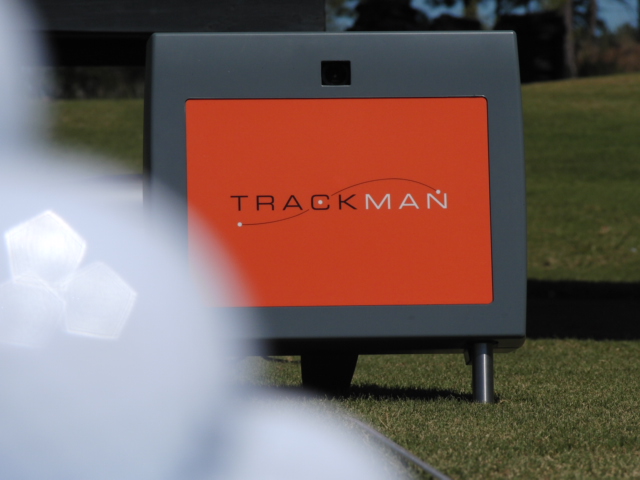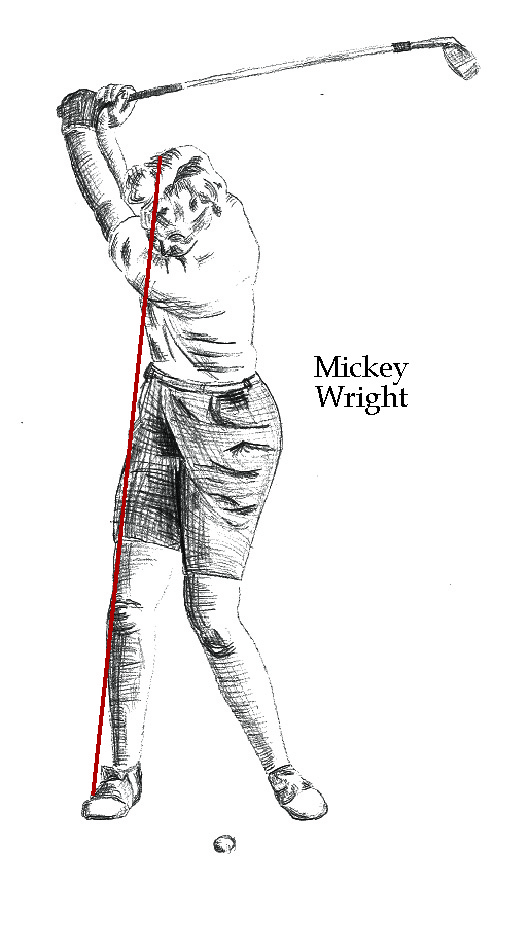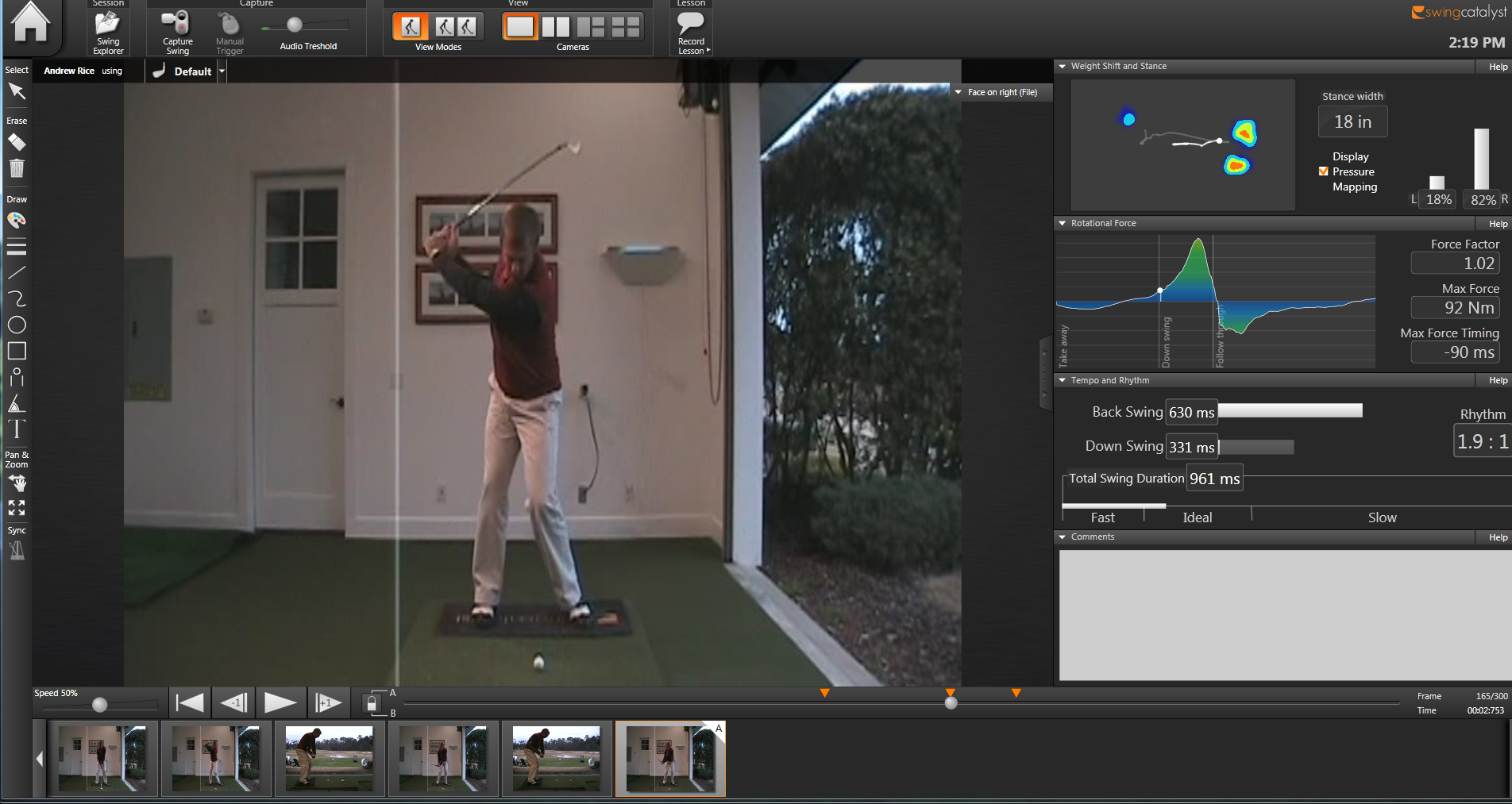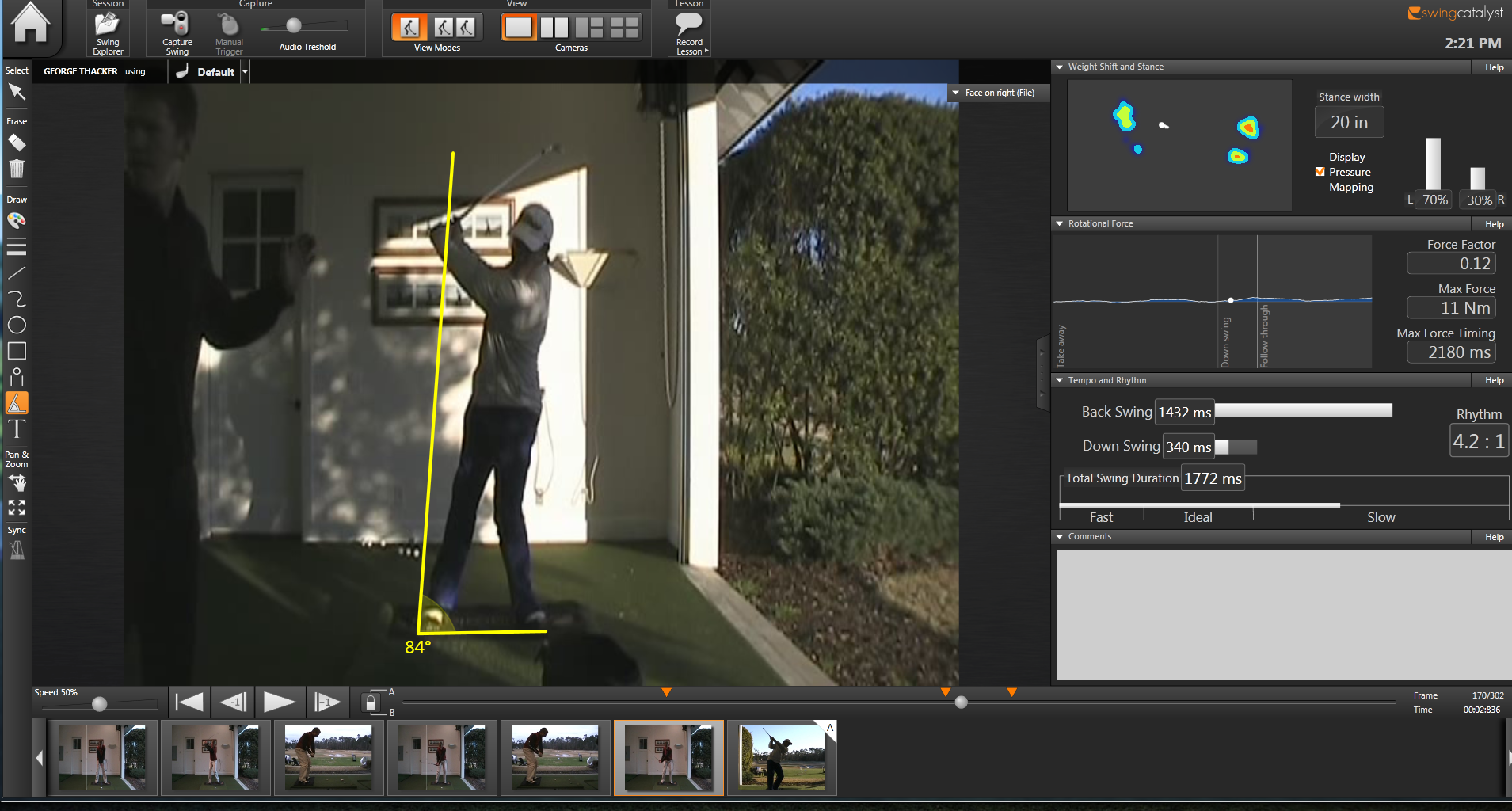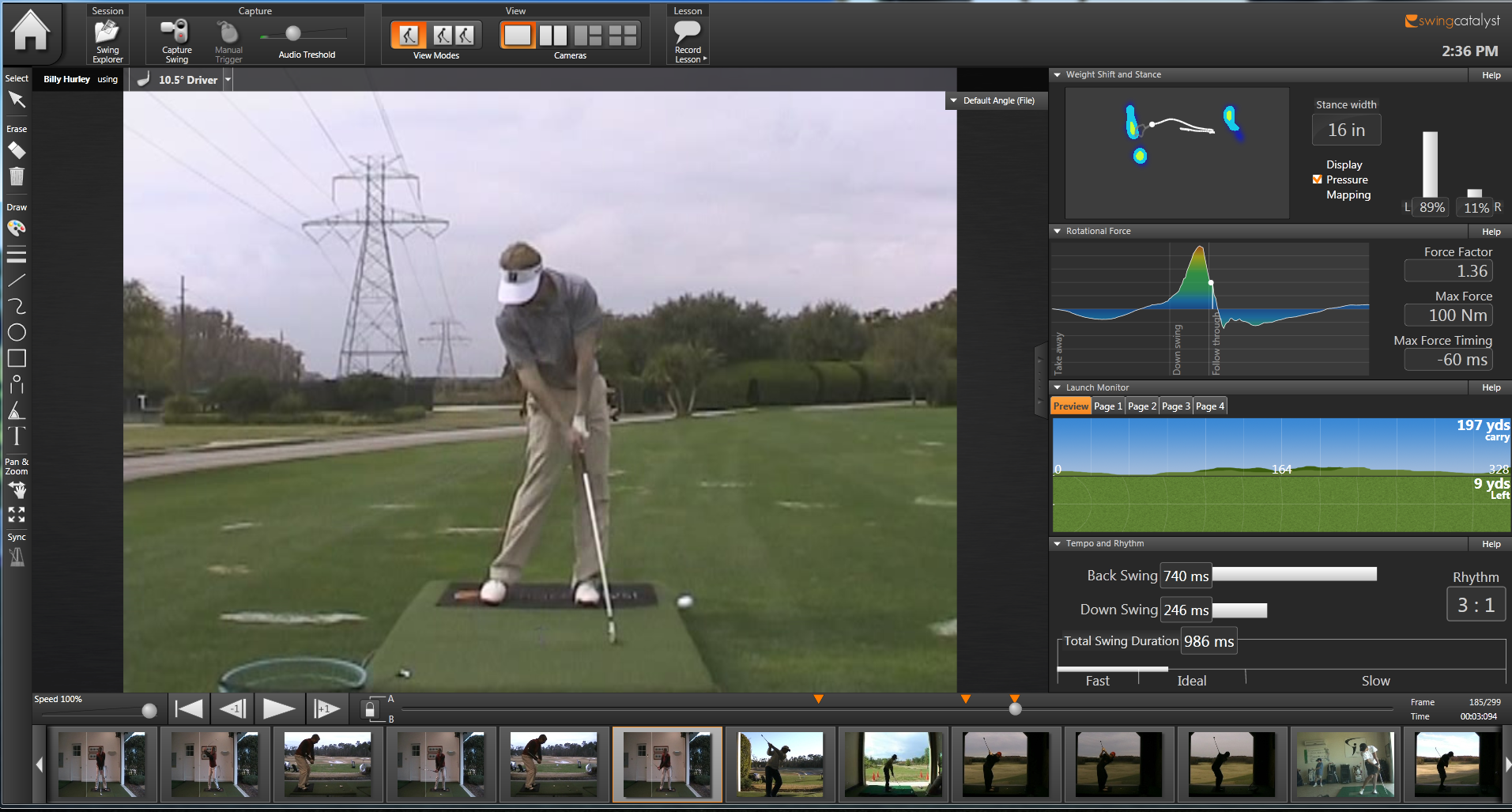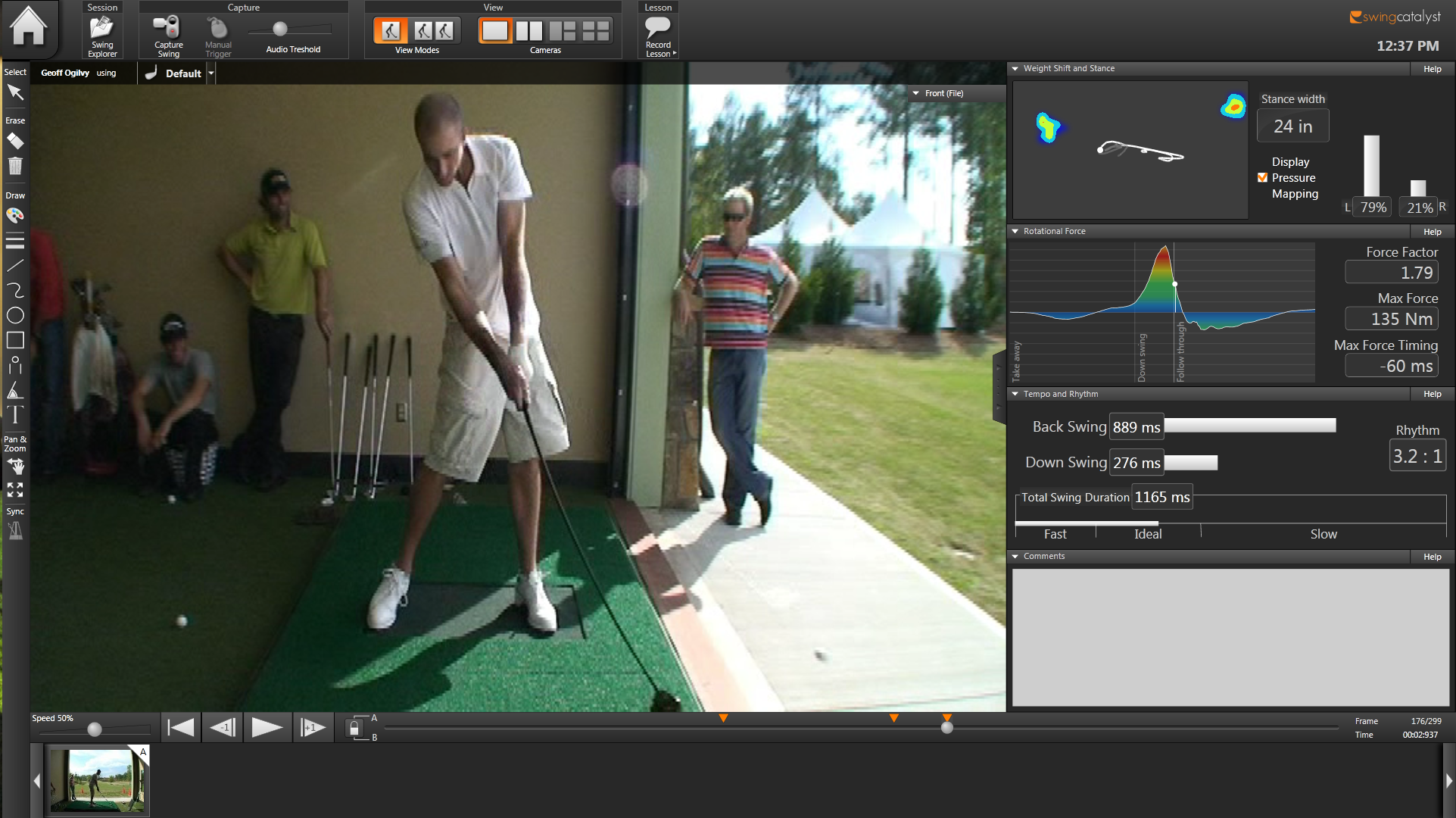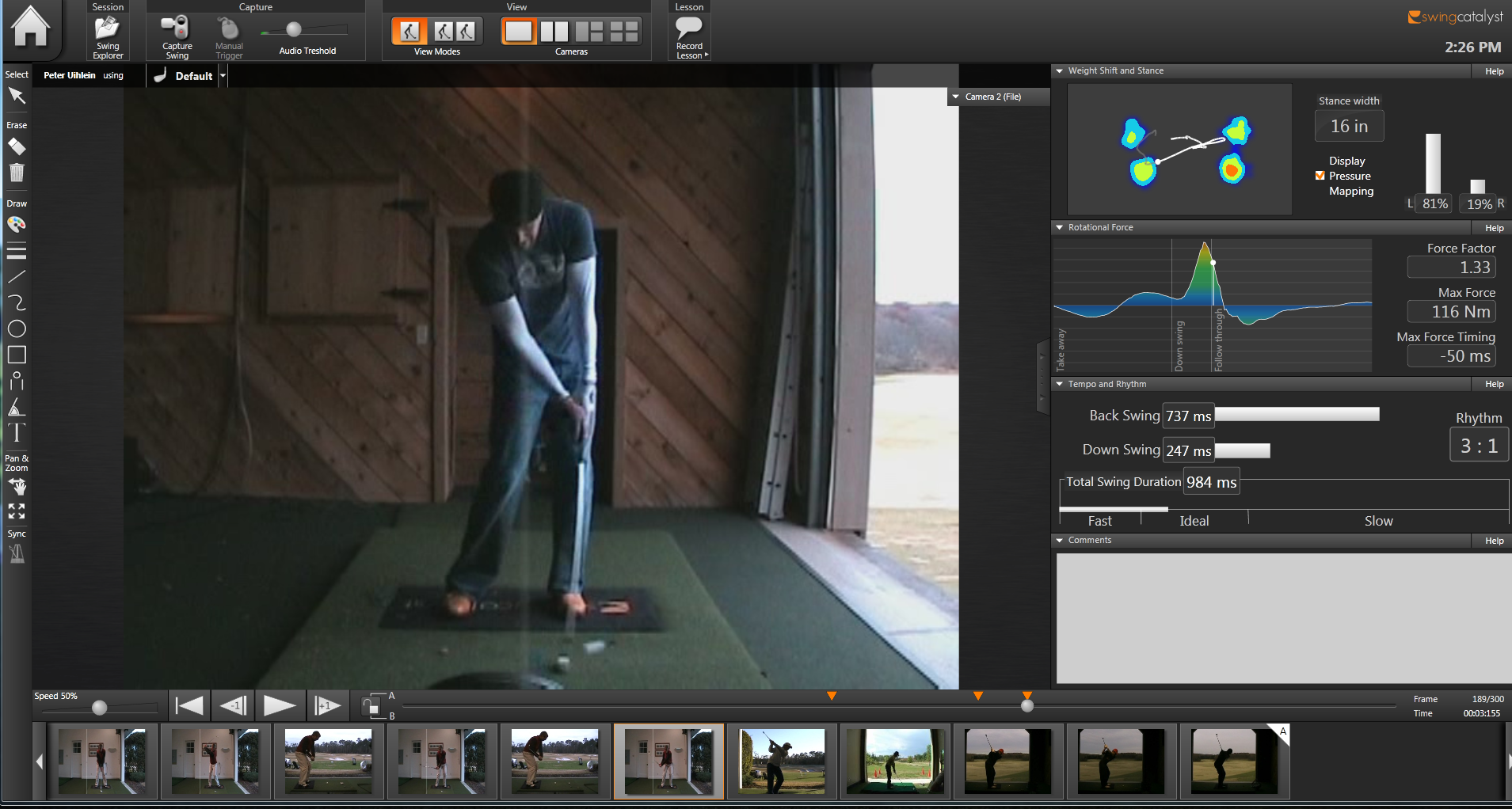Weight Transfer and Positioning
/Having the use of the Swing Catalyst system has almost been like being able to look behind the curtain to see what truly happens to a golfers' weight when they swing the club. Guesswork and perception are taken out of the equation and the information you read in the following post is based purely on fact.
Weight shift is a poor term. Similar to the term "takeaway" it does not convey the appropriate sensation. My research has shown that the term "weight transfer" would be far better. And here's why: When I think of shifting my weight I make a conscious move to get my body over to my back foot for example. Not good! The weight transfers in the swing purely due to the motion in the arms hands and club as they travel away from the target. Think of it this way - if I swing my arms, which each weigh 15 lbs, and a club in my backswing you can be sure that I am transferring weight onto my back foot. There is however no conscious shifting or body move that gets the weight over there. This is exactly why the 84 degree rule (as illustrated below) holds true.
There should be no lateral body move in the backswing, yet many players often wrote or spoke about a sense of weight transfer. The body stays centered while the weight is transferred by the motion in the arms and the club. Video HERE
I found that very good golfers (college and touring professionals) had a maximum percentage of 80% of their weight on their back foot slightly beyond halfway back. This was achieved with almost no lateral movement in the upper body.
Click to Enlarge
In the screen shot above notice how the center of gravity indicator between my feet (top right) is almost as far to the right as it goes. This should be the furthest point to the right the weight moves and from here it starts moving back to the front foot.
I did find that a reverse weight shift (reverse pivot) was almost impossible for me to achieve. With the arms and club swinging to the right it made it very difficult to get the weight to favor the front foot in the backswing.
In the screen shot below I have positioned my weight 70/30 on the front foot (with the 84 line as a reference) at the top of my swing as advocated by some teachers. While the numbers may be difficult to achieve I did find that for many people the idea of keeping their body left and sensing the weight being 70/30 in favor of the front foot proved to be very helpful. This helped me to seperate the difference between what a student felt and what was real. Many times it was better for a student to work towards a feeling than the actual reality.
Click to Enlarge
At the start of the downswing, when the left arm (for right handers) gets parallel to the ground the majority of top tour professionals displayed a weight distribution of 50/50. Sam Snead illustrated this beautifully!
I did notice that with single figure handicap golfers there seemed to be a tendency to get their weight too far forward (75/25) at this point. This led to a situation where, when they got to the delivery point (shaft parallel to the ground), they very often had more than 90% of their weight on their front foot and had to back up through impact. This seemed to be a contributing factor to hooks and blocks - the better golfers most common malady!
All the best ball strikers studied displayed a tendency to transfer the weight to the front foot in a smooth and continuous flow with no backing up or slowing of the transfer. The more straight and direct the CoG trace moved the better. This meant that they arrived at impact with an 80/20 split favoring the front foot and the weight continued to move smoothly over to the front side beyond impact.
Click to Enlarge
Notice the continuous and smooth CoG trace into the front foot here by Billy Hurley. His weight was more than likely 85% on the front foot at impact.
The tendency with higher handicap golfers (above 18) was for the weight to get too far back and then remain there all the way through impact. It was not unusual to see one of these golfers have a split of 70/30 favoring the back foot at impact.
In summary:
- The weight should start at 50/50
- Somewhere between halfway back and the top of the backswing the player should max out weight on the back foot at 80/20
- At halfway down (arm parallel to the ground) the weight should once again be 50/50
- The weight should make a continuous tranfer to the front foot in the downswing with an 80/20 split occuring at impact.
A few more screen shots:
Geoff Ogilvy passing through impact (shaft bend is due to camera lens)
Click to Enlarge
Peter Uihlein at impact
Click to Enlarge
Please keep two things in mind as you process the above information: due to the relative newness of this technology there is not a huge sample group of golfers to study and that all percentages are a mean or "ballpark" number.
Follow andrewricegolf on FACEBOOK
Welcome to my Blog!
/Welcome to my blog and thanks for checking in with andrewricegolf.com! It is an exciting week on the golf calendar and I am honored to launch this site in conjunction with the first major of the year - the Masters! I would like to encourage anyone who loves the game and is keen on improving to subscribe to my RSS feed using any feed reader (even email!) by clicking on the subscribe button to the right. Every few days I will post on all things golf - with a definite slant toward swing mechanics and philosophy (sounds intimidating doesn't it?). Many of you who know me, know that I am not a fan of deeply complex or intricate swing jargon (what with being fairly simple minded and all!) and will thus strive to keep it real - real as in, this is something that is simple to do, easy to comprehend, and it works!
I will also sound off on my opinions pertaining to course architecture (old school rules!), teaching technology, PGATour players (these guys do not know how good they have it!), where golf is headed (?), fantasy golf, golf fashion (beware the white shirt and khaki brigade...) and a quandry of other meaningless topics that include the word golf.
My thoughts on the changes at Augusta National and the Masters are echoed here in this quote from Ben Crenshaw:
(I hope that Billy Payne will slowly get the course back to the old risk-reward beauty that it used to be!)
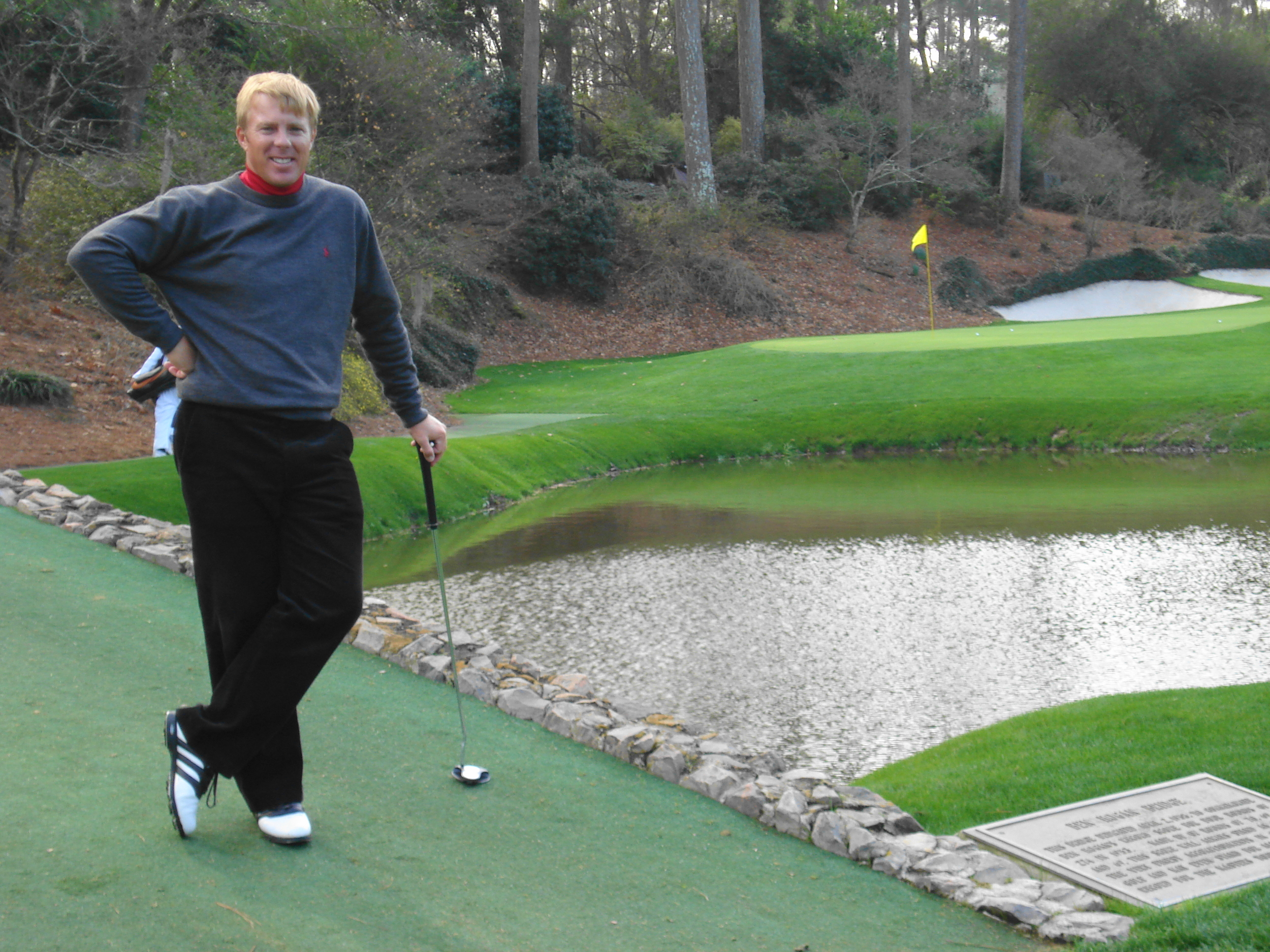
The old Augusta was a tightrope, where risks were encouraged but a fall could hurt. "You always felt at Augusta you could take a chance on something, whether it was a tee ball or a second shot," Crenshaw says. "You had more room to play, and more people could play dangerously. It was totally different from any challenge in the world." To Crenshaw, the narrowing of the fairways from the equivalent of wide boulevards to country lanes altered things dramatically. "The second cut on lots of holes—that's first and foremost, because the course went from here to like this," he says, moving his hands very close together. "I think they needed to do something in the way of length, [but] I wouldn't have constricted it as much.
"There is no question it has become more of a defensive proposition," he continues. "The thing that set Augusta apart forever is that it's exciting and theatrical. People would pull off shots, but the flip side of that is that if you failed—and Jones wrote about this—it would tax you mentally. If you failed, it had a big effect on you. All I remember is how I felt there as a player [in my prime]. I hope the guys today are doing the same gyrations that we did. That, to me, is the question.
Thanks for reading and I hope to hear your comments!



